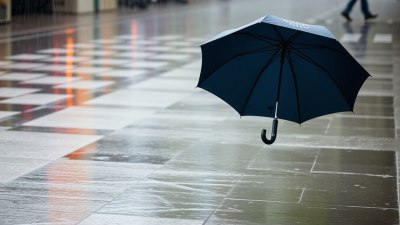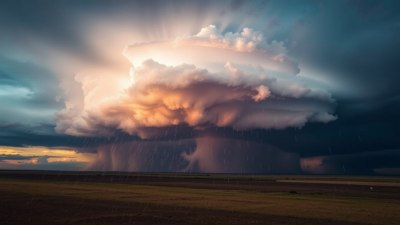Why Umbrellas Are Useless Until You Don’t Have One
Explore why umbrellas often feel useless when you have them, but become indispensable when you don't.

Image created with Flux Schnell
Umbrellas have been a staple of rainy day defense for centuries. Yet, paradoxically, many people often feel they are useless or an inconvenience until the moment they find themselves without one in the rain. Why does this shift in perception occur? This article explores the psychology, practicality, and cultural significance of umbrellas to explain why they seem so indispensable only when absent.
The Everyday Burden of Carrying an Umbrella
Carrying an umbrella is often seen as a chore or an added burden. People complain about having to lug them around, especially when the weather forecast seems uncertain or when temperatures are warm and rain is unlikely. The cumbersome nature, the struggle to open or close them in tight spaces, and the hassle of drying them out once wet contribute to a general dislike or underappreciation of umbrellas.
Moreover, on sunny days, umbrellas often take up valuable space in bags or hands without any tangible benefit. Many choose to forgo carrying one altogether, reasoning that the inconvenience outweighs the occasional need. In these moments, umbrellas appear redundant or useless, especially if they never get used.
Umbrellas and the Illusion of Control
The perception of umbrellas as useless is deeply tied to our desire for control over the unpredictable weather. People often plan their day around weather forecasts and schedules, believing they can avoid rain by smart timing or route choices. When rain unexpectedly appears, the absence of an umbrella highlights this illusion of control, reinforcing the feeling that umbrellas are only necessary if you can plan ahead perfectly.
However, even the best-laid plans can fail due to sudden weather changes. Those who have ventured out without an umbrella during unexpected downpours develop a renewed appreciation for it. Interestingly, this is often when the umbrella is felt to be truly valuable—not when carried as a precaution but when its absence is painfully obvious.
The Social and Psychological Dynamics of Umbrella Use
Umbrellas also carry social connotations. In some cultures, carrying an umbrella signifies preparedness and responsibility, while in others it might be seen as a sign of excessive caution or timidity. This social perception influences when and how people choose to carry umbrellas, affecting their sense of usefulness.
Psychologically, the value of an umbrella is linked to the concept of loss aversion—the discomfort of losing something is greater than the satisfaction of gaining it. Having an umbrella might initially seem insignificant, but the thought of not having one during rain invokes stress and regret, making the item suddenly invaluable.
Design Limitations Affecting Umbrella Usefulness
Traditional umbrellas have notable design limitations that contribute to their perceived uselessness. They are prone to inversion by strong winds, often break or lose ribs, and can be bulky. These practical shortcomings make carrying umbrellas feel more like a hassle than a help, especially when rain is light or brief.
Innovations such as compact, windproof models and automatic open-close mechanisms have helped alleviate some complaints, but no umbrella is perfect. This imperfection reinforces why many regard umbrellas as situationally useless or critical depending on circumstances.
Alternatives to Umbrellas and Their Impact
When umbrellas feel inconvenient, many turn to alternatives like raincoats, ponchos, or even simply seeking shelter. These options provide different balances of protection and mobility, sometimes proving more or less useful depending on the situation. For instance, raincoats allow hands free movement but might feel hot or cumbersome, whereas ponchos offer quick coverage but limited wind protection.
These alternatives influence how umbrellas are valued. When people rely on rainwear instead, umbrellas can be viewed as redundant, thus less useful. Conversely, in urban settings where shelter options are limited, umbrellas regain prominence.
The Natural Human Response to Unpredictability
Rain is inherently unpredictable. Human beings have developed various coping mechanisms ranging from forecasting to gear adaptation. Umbrellas are a direct response, designed specifically for the challenge of sudden showers. The tension between unpredictability and preparedness fuels the perception of umbrellla usefulness. If we could predict rain perfectly, the umbrella would always feel useful. But because we cannot, its value is only recognized in hindsight.
The Economics of Umbrella Ownership
The decision to purchase and carry an umbrella also involves economic considerations. Umbrellas are relatively affordable, but occasional users hesitate to buy one due to infrequent need. This reluctance makes umbrella ownership inconsistent, heightening that feeling of uselessness during dry stretches.
Conversely, regular owners of umbrellas tend to value them more, recognizing their utility beyond mere rain protection. Some elegant, durable, or branded umbrellas become fashion statements or accessories, indelibly linking style and functionality.
Cultural Depictions of Umbrellas
Across media and literature, umbrellas symbolize more than rain protection. They represent shelter, protection, secrecy, or transformation. This symbolic layer adds to their cultural cachet but can also create cognitive dissonance when the umbrella feels functionally insufficient.
For example, the iconic image of a person walking with an umbrella in a storm conveys endurance and preparedness. Yet the same individual might grumble over its bulkiness during a mere drizzle, revealing the discrepancy between romanticized use and practical experience.
When Being Without an Umbrella Feels Cruel
The starkest feeling of umbrella uselessness occurs precisely when one does not have one amid rain. This ironic twist highlights how indispensability is situational. The discomfort, cold, or inconvenience suffered without an umbrella sharpens the memory and appreciation of its protection.
This moment of absence leads many to change habits by always carrying an umbrella, buying better models, or seeking alternatives proactively. The painful reminder of why umbrellas matter thus propels behavioral change.
The Role of Technology and Innovation
Technological advances continue to improve umbrella design and utility. Smart umbrellas equipped with weather alerts, GPS tracking, and even solar panels for charging devices are emerging. Such innovations aim to shift the perception from useless burden to indispensable tool.
Beyond design, apps and real-time weather services help reduce unexpected rain encounters, mitigating the moment of umbrella absence. Together, these developments may transform how we perceive and use umbrellas over time.
Environmental Considerations
Umbrellas also have environmental footprints, as low-quality models often end up discarded quickly. This wastefulness contributes to negative views of umbrellas as disposable or short-lived. Sustainable umbrella production and recycling are growing areas of interest, influencing future usage perceptions.
Choosing durable, repairable, or eco-friendly umbrellas can enhance their perceived value and reduce feelings of uselessness by ensuring longer-term benefit.
The seeming uselessness of umbrellas during dry spells or when they are carried as a precaution contrasts sharply with their critical importance when they are absent on rainy days. This contradiction is rooted in practical challenges, psychological factors, social perceptions, and the inherent unpredictability of weather. Innovations in technology and sustainability promise to improve the umbrella experience, potentially shifting their perceived value. Until then, umbrellas remain an ironic necessity—often dismissed until the moment they are most needed.











